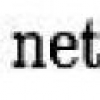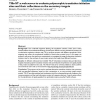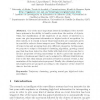216 search results - page 40 / 44 » Adaptive context recognition based on audio signal |
TNN
1998
13 years 7 months ago
1998
—Adaptive resonance theory (ART) describes a family of self-organizing neural networks, capable of clustering arbitrary sequences of input patterns into stable recognition codes....
ICANN
2009
Springer
13 years 5 months ago
2009
Springer
Mapping brain activity patterns in external actions has been studied in recent decades and is the base of a brain-computer interface. This type of interface is extremely useful for...
ICPR
2000
IEEE
14 years 8 months ago
2000
IEEE
A new approach for separating mathematics from usual text is presented. Contrary to the existing methods, it is more oriented toward the segmentation than the recognition, isolati...
BMCBI
2007
13 years 7 months ago
2007
Background: The nucleotide sequence flanking the translation initiation codon (start codon context) affects the translational efficiency of eukaryotic mRNAs, and may indicate the ...
IWINAC
2011
Springer
12 years 10 months ago
2011
Springer
Abstract. One of the more important issues in intelligent video surveillance systems is the ability to handle events from the motion of objects. Thus, the classification of the tr...



